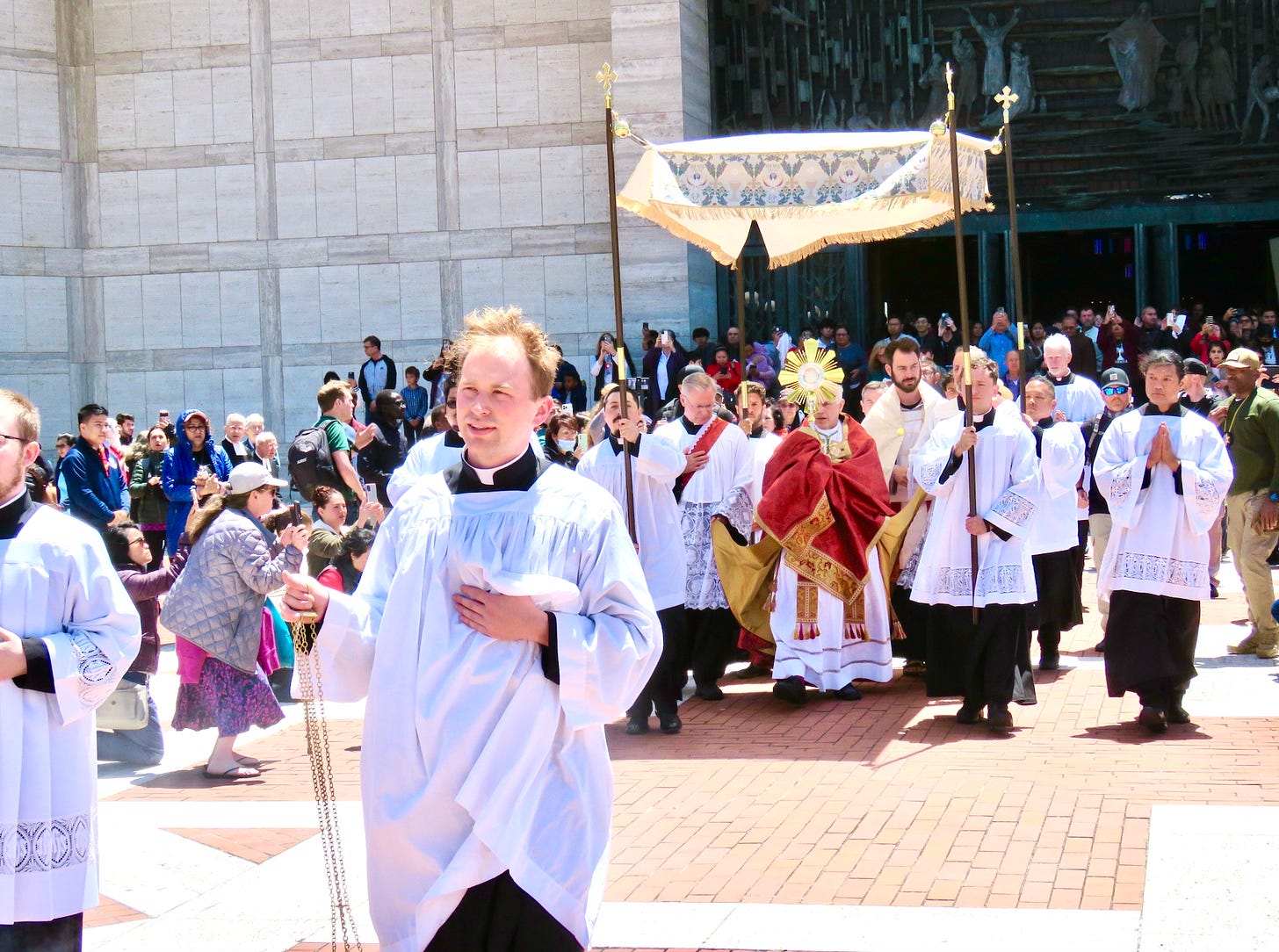On pilgrimage: ‘God has better plans than we do’
As a Eucharistic pilgrimage kicks off in San Francisco, why do Catholics walk?
Pillar subscribers can listen to this article here: The Pillar TL;DR
Nearly 4,000 Catholics came together in San Francisco Sunday afternoon to walk with the Eucharist across the Golden Gate Bridge, taking the first steps on one of four walking pilgrimages across the country this year, part of the USCCB-sponsored Eucharistic revival project.

